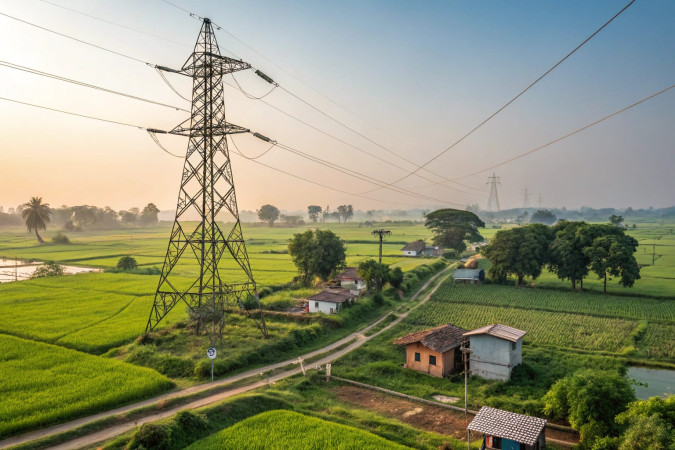
Follow India Renewable Energy News on WhatsApp for exclusive updates on clean energy news and insights
Transmission Line and Thermal Capacity Additions Lag Behind Targets in FY25
May 13, 2025
While India witnessed strong growth in green power capacity in FY25, additions in transmission lines and coal-based thermal generation slowed significantly, raising concerns about power supply stability amid growing energy demand. According to Central Electricity Authority (CEA) data, only 8,830 circuit kilometers (ckm) of transmission lines were added during FY25—37.8% lower than the 14,203 ckm added in FY24 and well short of the 15,253 ckm target.
The shortfall was mainly due to land acquisition and right-of-way (RoW) issues, despite the power ministry revising compensation rates in June 2024 to reduce disputes. The state sector achieved just 57% of its target (4,761 ckm), central projects (mostly under Power Grid Corporation) met 48% (2,586 ckm), and the private sector achieved 93.5% (1,483 ckm). In March 2025, 1,950 ckm were added.
The National Electricity Plan emphasizes the importance of strengthening the grid to support India’s 500 GW non-fossil fuel capacity target by 2030. This includes Rs10,000,000 crore investment by 2030 to expand the transmission network, integrate battery energy storage systems (47 GW), 10 GW of offshore wind, and deliver power to coastal green hydrogen and ammonia hubs like Mundra, Paradeep, and Vizag.
Meanwhile, coal-based capacity additions also declined 32.65% YoY to 3.87 GW, down from 5.75 GW in FY24. Delays in commissioning, land issues, and material supply disruptions were cited as reasons. Despite the push for clean energy, coal remains vital due to rising demand—India's peak power is expected to reach 270 GW this summer, surpassing last year’s 250 GW record.
The slowdown in key infrastructure areas may hinder the energy transition and underscores the need for streamlined regulatory and land processes to meet both green and conventional energy goals in a rapidly growing power market.